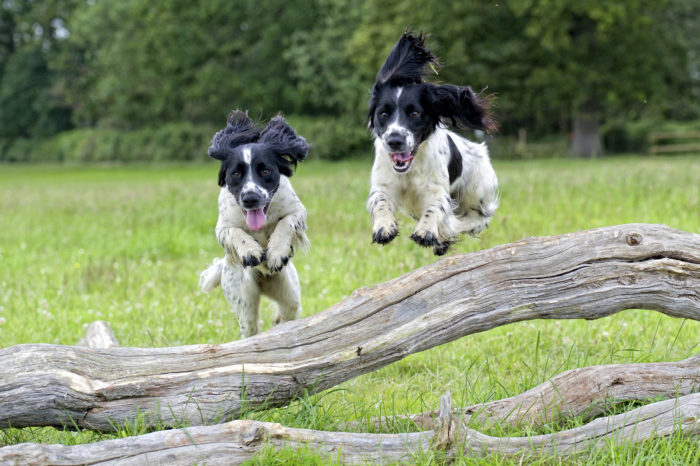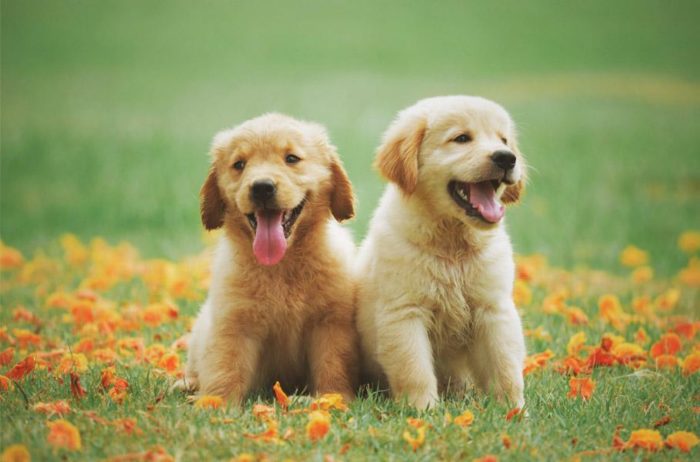The question, when do puppies calm down is one that has many answers. Puppies are comparable to infant infants in their hyperactivity like innocent social beings. As their development process progresses, these puppies become more energetic with increased curiosity. You would normally see them going out of their shelter in order to explore their environment.
Don’t be too surprised to see your rambunctious puppy in your bedroom chewing your shoes, they can stroll into the restroom to unroll the toilet paper, and the kitchen can become another exploration avenue for growing dogs. Before we can answer the question of when do puppies calm down accurately, several factors will need to come into play.
Table of Contents
What Causes Hyperactivity in Puppies?

The high energy level observed in puppies during their developmental stage doesn’t have a single explanation. The reason for this is that canine breeds defer and individuality is a contributing factor. Their genetic makeup (character and morphological changes) is just different. Some of the morphological factors that can affect the energy level of puppies include;
Breed
As the breeds of puppies are different, so is their energy level, including the time they are expected to calm down.
Breeds like the Australian Shepherd and Border Collie have hyperactive puppies that may only begin to calm down around two years of age.
On the flip side, if your puppy belongs to the Teacup Bichon Fries or Bull Dog breed which is known for low energy levels, then it may take six to 12 months for them to calm down.
Wolfdog breeds like the American Blue Ray Shepherd may take three years or above before calming down. The same is applicable to other extreme working breed categories like the German Shepherd.
Social Structure
The mode of interaction can significantly affect a puppy’s energy level. When a puppy is regularly exercised, it is bound to release a lot of pent-up energy, necessitating the need to be calm while resting. The energy level of an unexercised dog remains completely untapped and the pup will have no choice but to find an outlet by engaging in unpalatable activities like digging and chewing.
A puppy that relates to senior dogs will be able to regulate its energy outburst as the older dogs have their way of maintaining good behavior. Just like humans, older canines mete out punishments to misbehaving puppies.
Gender
Though we are yet to see sufficient scientific proof backing this, female puppies are said to attain reproductive maturity earlier relative to the male, puberty may likely initiate in them a calming effect. It is also believed that spaying puppies have the power to calm them a bit as they mature.
When Do Puppies Calm Down? Standard Timeline For a Puppy’s Energy Level
This standard timeline for a puppy’s energy level offers an insight into when they are likely to calm down.
Newborn to 10 weeks
When puppies are newly born, they remain immobile and try to find warmth by clinging together in their whelping box. Their sole activity at this level is suckling to accumulate energy. A puppy’s ears and eyes won’t be able to function until the 10th to 13th day post-delivery.
Sitting and standing start at week three and a little exploration will commence in their box. Their teeth also start coming up during this period.
By four weeks old, a puppy’s senses – smell, sight, taste, and hearing will be fully developed. This comes with the ability to see, hear, taste, and smell.
The puppy will have enough energy stored up and at five weeks, it is already strong enough to start exploring its environs. The transition from liquid to solid food takes place at this stage. At six weeks, your puppies are mature enough to start socializing with humans.
By week 10, more development has gone in and the puppy becomes more energetic – running around, chewing on bones, playing with toys, and exploring boundaries.
From 10 to 16 Weeks
At this stage, puppies can be rather frustrating, their curiosity and energy level will be at their peak and may lead to tearing of furniture, clothes, and even disobedience. They have a very short attention span and forgetting commands and rules is quite common.
At this stage, consistent training sessions are recommended to establish desired behaviors. This is also the teething stage, meaning that all your important belongings should be kept well away since they tend to try their new teeth on anything that takes their fancy. Just like teething children, they become irritable, always looking for an outlet.
From 4 to 6 Months
For most puppies, this is the socializing stage, in the absence of a playful companion, the puppy should be given chew toys to chew on but when they have company, they can interact with other household pets in tussles, playing, and socializing. They can also indulge in playtime with their owner.
This is the perfect stage to recognize the puppy’s strengths, tendencies, and fears, and make efforts in addressing them; this should be done before they become deeply instilled. This is also the ideal period to monitor, as well as tackle your pup’s weaknesses such as fear, shortness of temper, and more. Pet parents who cannot handle this should hire the services of a professional dog trainer.
From 6 to 12 Months
At this stage, puppies become more grown in both mental capacity and size. Training should be intensified with a higher compliance level expected. Exercising should be done once or twice daily to manage their high energy level. The demand for exercise will increase as the dog gets older, in terms of the level of intensity and duration of its exercise sessions.
Read Also: 10 Stubborn Dog Breeds You Need To Look Out For
From 1 to 2 years
From one to two years of age, a puppy will become an adolescent and as they have explored a lot, coupled with constant exercise, curiosity level will tend to reduce. Now, your pooch will be calmer and mature but training must continue.
At What Age Do Puppies Calm Down?
Going by the points stated above, most puppies begin calming down with maturity, depending on their breed. The above timeline shows that a majority of puppies start calming down from six to 12 months.
Age notwithstanding, a puppy’s calmness will have a lot to do with other factors such as exercise and social structure.
Having said that, it is important to understand the characteristics of your dog’s breed, including its energy level. This is considered to be integral to training the dog.
